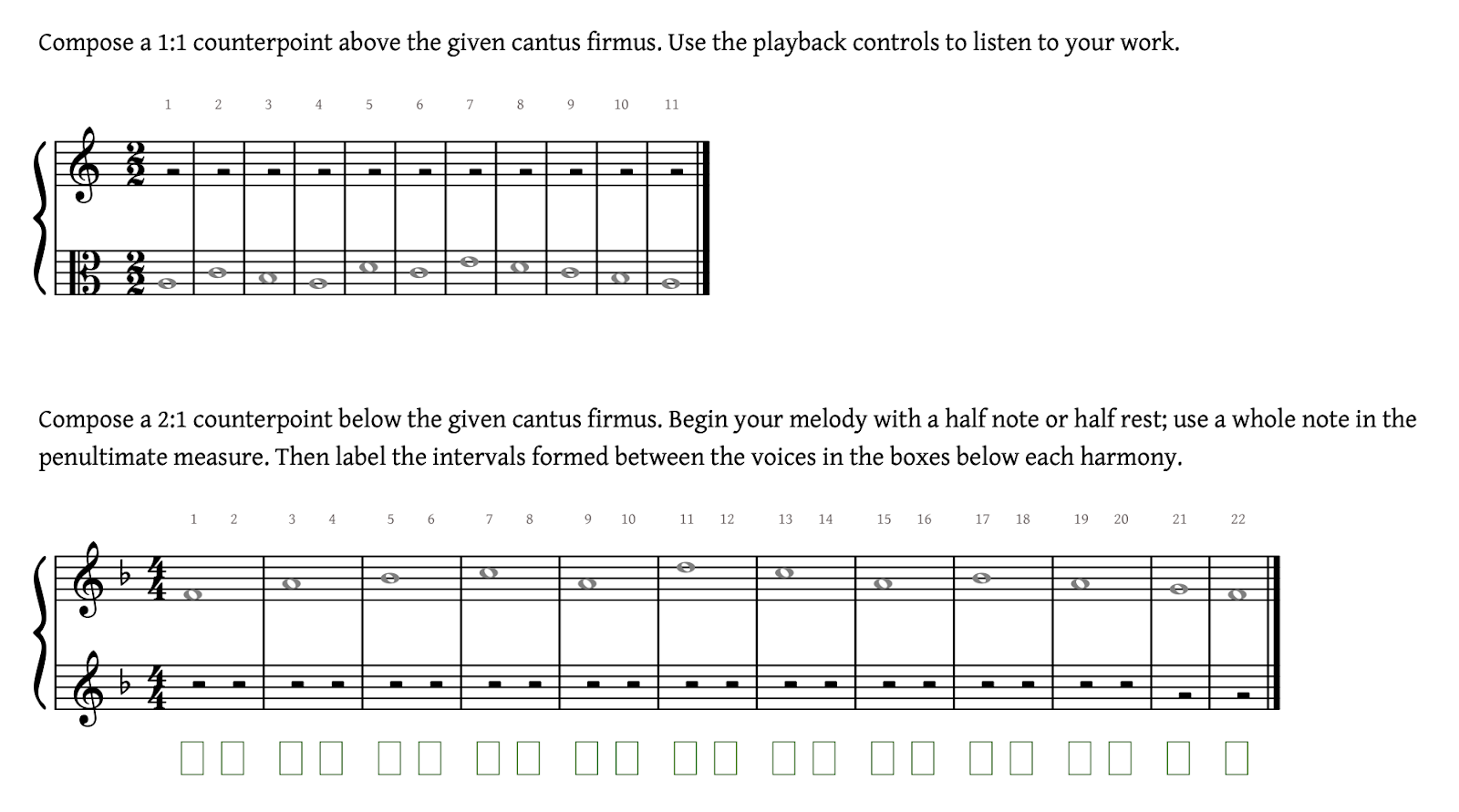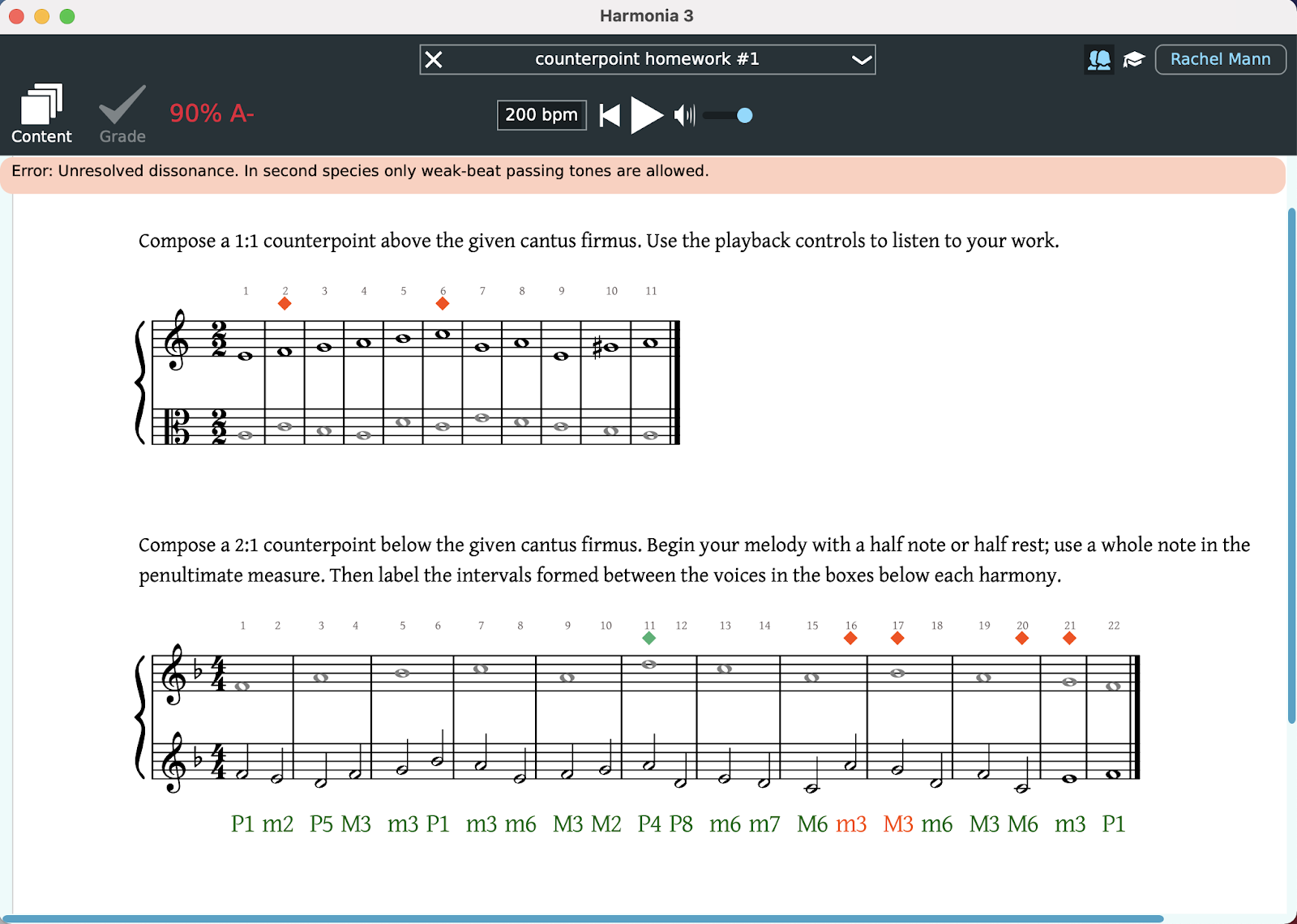Introducing Counterpoint Composition and Analysis in Harmonia
We are delighted to introduce the latest features available in Harmonia: new analysis and assessment tools for creating counterpoint lessons and exercises. The fall 2021 version of our app will support all manner of first- and second-species counterpoint activities, and the framework is designed to accommodate third and fourth species counterpoint, which will be added in the coming year. Our new in-app analysis engine analyzes and assesses counterpoint composition and analysis according to instructor-specific rules and guidelines.

Sample counterpoint exercises

Sample counterpoint exercises – graded by Harmonia
Note how hovering over the error in m. 6 of the second exercise (at the green diamond) provides specific feedback at the top of the window
Harmonia’s new counterpoint control panels enable instructors to select from a variety of allowable options based on curriculum needs and Harmonia will check student work and mark and annotate any errors. Because there are as many counterpoint rules and guidelines as there are teachers, programs, and schools, we built our counterpoint panels to give instructors complete control of both analysis settings and rubric tools. Instructors are given options for counterpoint exercises that affect the number and kinds of melodic and harmonic intervals allowed, and can determine transpositions, clefs, beginning and endings of exercises, and more.
In addition to tools and settings, the fall version of Harmonia will also come with new counterpoint generators. Generate 1:1 and 2:1 counterpoints above and below any of the eight cantus firmi by Fux. (Cantus firmi by Albrechtsberger, Jeppesen, and Kirnberger will be added over the coming months.) Because the overwhelming requests we have received have been for tonal counterpoint, most of these melodies have been cast in major and minor modes and Harmonia will analyze them accordingly. However, Harmonia can accommodate modal counterpoint as well because instructors can import any counterpoint—tonal or modal—from MusicXML and toggle the settings as needed.
In the coming weeks, we will publish blog posts and videos outlining and describing Harmonia’s 1) new counterpoint control panels and assessment tools, 2) the new in-app counterpoint generators, and 3) guidelines for notating and importing modal and tonal counterpoint examples in MusicXML.
The fall release of Harmonia will be made available via the app stores (Mac, Windows, iOS, Android, Chromebook, and most browsers) in early fall, but if you would like to check out the beta version of the app now, please send us a message and we will send you the beta app download link. We are still conducting internal beta testing, so any instructor feedback will help us make our app better for you.
